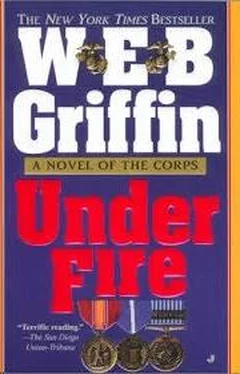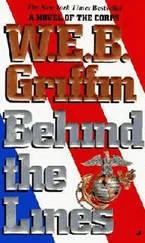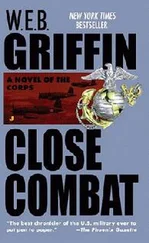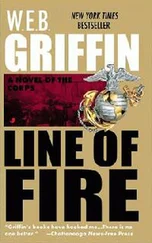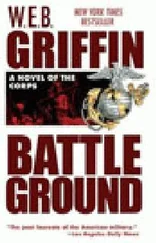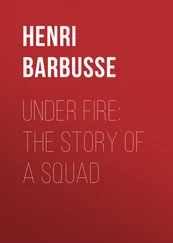Griffin W.E.B. - The Corps 09 - Under Fire
Здесь есть возможность читать онлайн «Griffin W.E.B. - The Corps 09 - Under Fire» весь текст электронной книги совершенно бесплатно (целиком полную версию без сокращений). В некоторых случаях можно слушать аудио, скачать через торрент в формате fb2 и присутствует краткое содержание. Год выпуска: 0101, Жанр: Старинная литература, на английском языке. Описание произведения, (предисловие) а так же отзывы посетителей доступны на портале библиотеки ЛибКат.
- Название:The Corps 09 - Under Fire
- Автор:
- Жанр:
- Год:0101
- ISBN:нет данных
- Рейтинг книги:5 / 5. Голосов: 1
-
Избранное:Добавить в избранное
- Отзывы:
-
Ваша оценка:
- 100
- 1
- 2
- 3
- 4
- 5
The Corps 09 - Under Fire: краткое содержание, описание и аннотация
Предлагаем к чтению аннотацию, описание, краткое содержание или предисловие (зависит от того, что написал сам автор книги «The Corps 09 - Under Fire»). Если вы не нашли необходимую информацию о книге — напишите в комментариях, мы постараемся отыскать её.
The Corps 09 - Under Fire — читать онлайн бесплатно полную книгу (весь текст) целиком
Ниже представлен текст книги, разбитый по страницам. Система сохранения места последней прочитанной страницы, позволяет с удобством читать онлайн бесплатно книгу «The Corps 09 - Under Fire», без необходимости каждый раз заново искать на чём Вы остановились. Поставьте закладку, и сможете в любой момент перейти на страницу, на которой закончили чтение.
Интервал:
Закладка:
34 DEGREES 20 MINUTES NORTH LATITUDE,
126 DEGREES 29 MINUTES EAST LONGITUDE
THE YELLOW SEA
2050 24 AUGUST 1950
Captain George F. Hart, USMCR, who was leaning on the railing on the aft of the high stern of the Wind of Good For-tune, next to the Korean sailor on the tiller, became aware that he could now see the light illuminating the compass in the small control compartment on the forward edge of the stern's deck.
He looked at his watch, then pushed himself off the rail-ing and walked across the deck to the captain, whose name was Kim, as were the names of two of the four Korean sea-men aboard. The fourth seaman, the cook, was named Lee.
He touched Captain Kim on the shoulder and mimed-first by pointing at his watch, then pointing below, and fi-nally by holding a make-believe microphone in front of his face-that it was time for him to report their position to their higher headquarters.
Captain Kim nodded, and either cleared his throat or grunted.
Hart took a chart from the pocket of his tunic. Surprising him, after a long, hot humid day, it had actually gotten chilly on the stern about half past five, and he had gone be-low to his cabin to get the tunic.
He held the chart out to Captain Kim, who studied it a moment, and then pointed out their position with a surpris-ingly delicate finger. They were slightly southwest of the extreme tip of the Korean peninsula. They had, in other words, just begun to sail northward up the Korean Penin-sula, far enough out to sea so it was unlikely that anyone on the shore could see the Wind of Good Fortune.
They weren't, technically, sailing. The sails had been lowered as soon as they were out of sight of Pusan, and they had moved under diesel power since.
Hart went to his-the captain's-cabin, closed the door and turned on the light. The SCR-300, still on a shipping pallet, was lashed to the deck. On top of it was a non-GI Hallicrafters communications receiver, also carefully lashed in place.
The radios had been installed in the wee hours of the morning personally by Captain R. C. "Pete" Peters, Signal Corps, USA, of die 8th Army (Rear) Communications Center. And he had personally supervised the installation of the antennae at first light in the morning. Then he had established radio contact with his radio room.
The radios had worked then, which did not mean, Hart thought, that they would work now, either because some-thing was wrong with them, or more likely because he didn't really have a clue how to work the sonofabitch, de-spite Captain Peters's instructions, each step of which Hart had carefully written down in a notebook.
Hart laid the chart on top of the radio, then took a large sheet of translucent paper from his tunic pocket and care-fully laid this on top of the chart. It was an overlay. The night before, "Major" Dunston had spent two hours care-fully preparing overlays. There were two sets of them, one set for the waters offshore the Korean peninsula, and the other set for the islands in the Flying Fish Channel. The overlays in each set were identical. On each were drawn a number of boxes, each one labeled with numbers. The numbers were-intentionally-in no way sequential. "063," for example, was surrounded by "109," "040," "101," and "171."
When he placed the overlay on the chart, Hart saw mat the position Captain Kim had pointed out to him was in-side the box numbered "091." Hart wrote the number in his notebook, then carefully folded the chart and the overlay and put them back in bis tunic pocket, with the aerial photo of the Flying Fish Channel islands and its overlay.
Then, carefully studying the first of the notes he had made during Captain Peters's very patient orientation, he threw bottom left-hand switch on the Hallicrafter and was relieved and pleasantly surprised when the dials im-mediately lit up.
Three minutes later, all the dials and gauges on both the transmitter and the receiver were lit up, and indicating what Hart's notes said they should.
He put on his earphones, and heard a hiss.
He picked up the microphone, pressed the press to talk switch, and said, "Dispatch, Dispatch, H-l, H-l."
H-l was the radio call sign assigned to the chief of the homicide bureau of the St. Louis police department. When the question of radio call signs for the good ship Wind of Good Fortune had come up about 0300 that morning, H-l had seemed be as good a call sign as any of the others sug-gested, and a lot better than some. And, Hart knew, he was unlikely to forget it.
He thought about this now, and of St. Louis, and its po-lice department, and asked aloud, "What the fuck am I do-ing here?"
The hiss in his earphone vanished suddenly, and a voice so loud it actually hurt his ears said, "Dispatch. Go ahead."
"Zero Niner One," Hart said into the microphone, and then repeated it.
"Dispatch understands Zero Niner One, Confirm," the too loud, very clear voice said in Hart's earphones.
"Confirm, confirm," Hart said into the microphone.
"Dispatch clear," the too loud voice said, and the hiss came back to Hart's earphones.
Hart put the microphone on top of the SCR-300, then carefully studied the front of the Hallicrafters, finally set-tling on a round knob. He moved it very carefully. The hiss in his earphones diminished. He started to leave the knob where it was, but on reflection-If I turn it too far down, I might not be able to hear him the next time-turned it back up-Then, consulting his notes, he began to shut the radio down.
[FIVE]
TOKCHOK-KUNDO ISLAND
0405 25 AUGUST 1950
They had spent most of the previous day rehearsing how to get the boats into the water, and their equipment into the boats, and what ran through Captain Kenneth R. McCoy's mind as he jumped from the wharf into Boat Two was that at least the boat part of the operation wasn't going to cause any problems.
He pushed the starter button on the control panel, and the lifeboat's engine, after a few anemic gasps, came to life.
The rehearsals for getting the boats into the water had been sort of fun, although smiling at the men's activities would have been inappropriate.
He had begun the exercise by explaining that they weren't actually going to remove the camouflage netting over the boats-because the boats might then be seen-they were going to mimic uncovering them, and getting them into the water, and getting the equipment into them once they were in the water.
Everyone seemed to agree that was a logical approach to the problem.
As the boats when they were really put into the water would have to be carried there, they started with that. They were heavy, and would require eight men on each side to carry them.
The men were assigned numbers, Left #1 through Left #8, Right #1 through Right #8.
After Boat One was in the water, Boat Two would be uncovered and put in the water. Whereupon Left #7 and Left #8 would remain in Boat Two, Right #7 and Right #8 would move to Boat One, and everybody else would form a line to the now-roofless house where their weapons, am-munition, and everything else they were taking with them had been laid out in a precise pattern. Then, first each indi-vidual weapon would be passed from man to man down and into the boats, and then each man's equipment.
Setting the system up and running through it, even in mime, had taken all morning, and through the lunch break, and then they had rehearsed how they would assault Yonghung-do.
About 1700, McCoy had gathered everybody together and gone through what Major Kim had learned of the dis-position of the physical characteristics of the island, the lo-cation of the North Korean troops on the island, and the plan: Yonghung-do was about three miles long, north to south, and shaped something like an hourglass. Each end of the island was about a mile wide, and each had a 250- to 300-foot hill in its center. About in its middle, the island narrowed to a few hundred feet.
Читать дальшеИнтервал:
Закладка:
Похожие книги на «The Corps 09 - Under Fire»
Представляем Вашему вниманию похожие книги на «The Corps 09 - Under Fire» списком для выбора. Мы отобрали схожую по названию и смыслу литературу в надежде предоставить читателям больше вариантов отыскать новые, интересные, ещё непрочитанные произведения.
Обсуждение, отзывы о книге «The Corps 09 - Under Fire» и просто собственные мнения читателей. Оставьте ваши комментарии, напишите, что Вы думаете о произведении, его смысле или главных героях. Укажите что конкретно понравилось, а что нет, и почему Вы так считаете.
